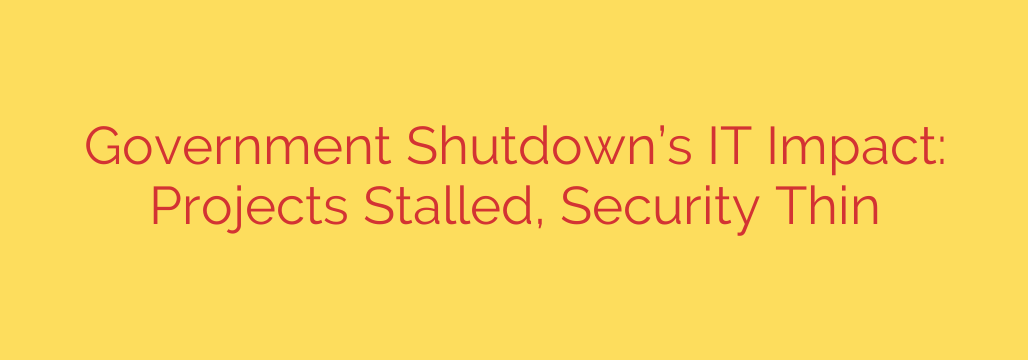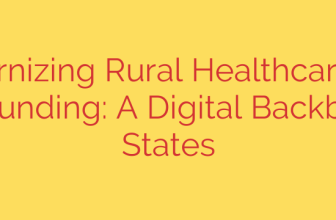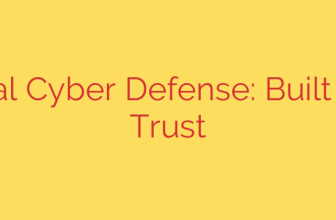
The Digital Domino Effect: How a Government Shutdown Puts National IT and Cybersecurity at Risk
When a government shutdown occurs, public attention often focuses on the most visible consequences: closed national parks, delayed federal services, and furloughed employees. But beneath the surface, a far more insidious problem unfolds in the digital realm—one that stalls critical progress and exposes the nation to significant security threats.
The shutdown of government operations is not just an administrative pause; it’s a full stop on the nation’s technological momentum and a dangerous weakening of its digital defenses.
Innovation on Hold: Stalled IT Modernization
The federal government is in a constant race to modernize its aging digital infrastructure. These are not minor tweaks but massive, multi-year projects aimed at replacing outdated systems, improving public-facing services (like applying for benefits or paying taxes online), and enhancing overall efficiency. When a shutdown happens, these essential projects are frozen in place.
Work stops, timelines are shattered, and momentum is lost. Highly skilled IT professionals and contractors are sent home, leaving complex projects in a state of suspended animation. Restarting this work isn’t as simple as flipping a switch. It requires re-engaging teams, reassessing project status, and trying to recover lost time, all of which adds to the final cost for taxpayers. Long-term IT modernization projects, crucial for improving government services and security, grind to a halt, setting back progress by months or even years.
A Widened Attack Surface: Cybersecurity in the Crosshairs
Perhaps the most alarming consequence of a shutdown is the immediate impact on cybersecurity. While “essential” personnel remain on duty, this often constitutes a skeleton crew focused only on maintaining basic operations. The proactive, defensive work that keeps federal networks secure is largely abandoned.
This includes critical tasks like:
- Threat Hunting: Actively searching for malicious actors within government networks.
- Software Patching: Applying urgent updates to fix newly discovered vulnerabilities.
- System Monitoring: Analyzing network traffic for signs of an attack.
With the majority of cybersecurity experts furloughed, the government’s ability to detect and respond to threats is severely diminished. Malicious actors, both foreign and domestic, are well aware of this vulnerability. They see a government shutdown as a window of opportunity to probe for weaknesses, launch attacks, or install malware that can be activated later. With most cybersecurity personnel furloughed, federal networks operate with a skeleton crew, leaving them vulnerable to unpatched threats and sophisticated attacks.
Furthermore, security certificates for government websites can expire during a prolonged shutdown, leading to security warnings for users and undermining public trust in official digital platforms.
The Human Element: Furloughs, Morale, and a Widening Skills Gap
The impact on the federal IT workforce cannot be overstated. Government shutdowns create immense uncertainty and financial hardship for the dedicated professionals responsible for running and securing the nation’s digital infrastructure. This instability can have lasting consequences.
Repeated shutdowns damage morale and make it difficult to recruit and retain top-tier tech talent. Faced with job insecurity, many skilled IT and cybersecurity experts may choose to leave public service for more stable and often higher-paying jobs in the private sector. The instability caused by shutdowns damages morale and can lead to a long-term “brain drain” of skilled IT and cybersecurity talent from the federal government. This exodus exacerbates an already existing skills gap, weakening the government’s ability to defend itself in an increasingly hostile digital world.
Security Tips for the Public During Government Disruptions
While the primary responsibility for securing federal systems lies with the government, citizens and businesses should exercise heightened caution during and immediately after a shutdown.
- Beware of Phishing Scams: Attackers often exploit confusion by creating fake government websites or sending emails that mimic official communications to steal personal information. Always verify the URL ends in
.govand be suspicious of unsolicited requests for data. - Verify Information Sources: Rely on trusted news sources and official government channels for updates. Disinformation can spread rapidly during periods of uncertainty.
- Monitor Your Accounts: Keep a close watch on your financial and personal accounts for any suspicious activity, especially if you have recently interacted with a government service online.
Ultimately, the digital consequences of a government shutdown are profound and far-reaching. It’s not just a pause in operations—it’s an active erosion of technological progress and a self-inflicted wound to national security, leaving the nation’s most critical digital assets exposed and at risk.
Source: https://go.theregister.com/feed/www.theregister.com/2025/10/01/us_government_shutdown_it_seccurity/








